What is Instructional Design? Top 5 Instructional Design Frameworks for Higher Education
An instructional design framework or model for higher education offers specific guidelines to organize appropriate pedagogical scenarios to be able to achieve desired instructional goals. The instructional design here can be defined as the practice of creating specific instructional experiences to help facilitate learning most effectively in Higher Ed students.
The learning design framework helps and guides educators to effectively plan the overall process. This blog aims to explore more about instructional design in higher education and discuss the types of educational frameworks in the field.
Table of Contents:
- Why Use an Instructional Design Framework or Model
- Top 5 Instructions Design Models
1. The ADDIE Framework
2. Bloom’s Taxonomy
3. Backward Design/ Understanding By Design (UbD) Framework
4. Design Thinking Framework
5. Merrill’s Principle Of Instruction - In Conclusion
Why Use an Instructional Design Framework or Model?
Regardless of which framework or model is used, the instructional design models and frameworks help ensure that instruction is created efficiently and is grounded in principles that connect to our best understanding of how higher ed students learn.
Various models in this area allow instructional designers to develop materials that inspire engaging and effective learning experiences. These learning experiences enable students to acquire and retain new knowledge and skills.
Top 5 Instructions Design Models:
1. The ADDIE Framework
The ADDIE framework uses Analyze, Design, Develop, Implement, and Evaluate as five factors to help instructional design professionals tackle higher education projects in stages. It is a pretty common curriculum design framework available for all.
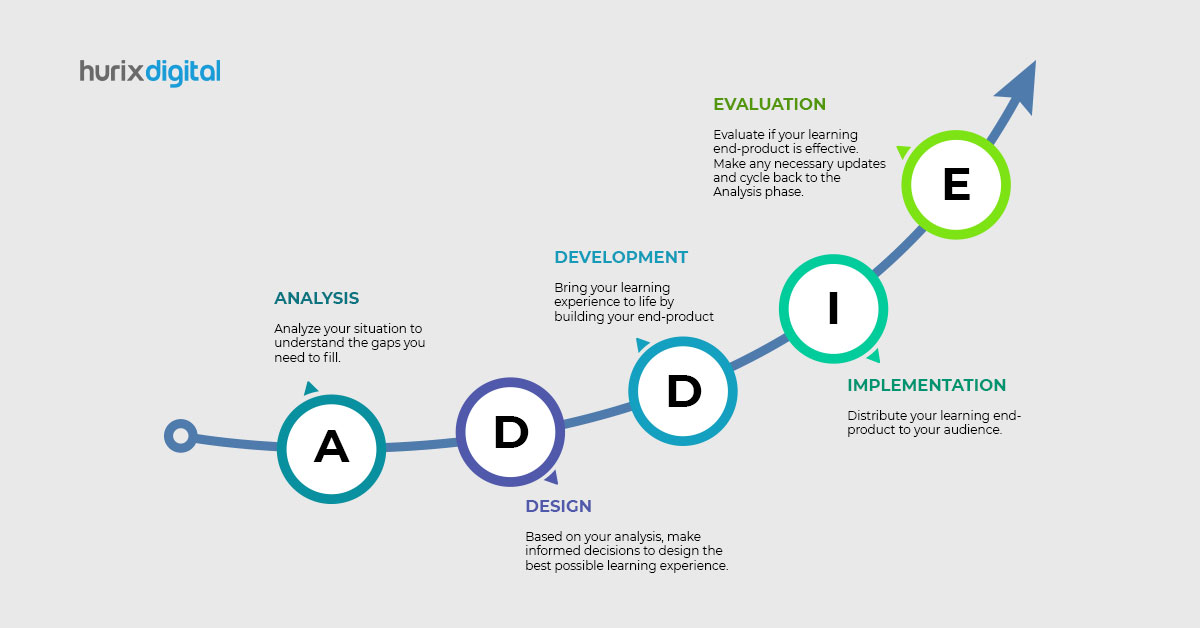
The key components of this model are-
- Analysis: The phase involved establishing the main instructional problem and overall instructional goals, followed by identifying the learner’s needs, including existing skillsets and knowledge.
- Design: The step involves outlining the learning objectives, instructional strategies, content, assessments, lesson planning, subject matter analysis, and media selection.
- Development: At this stage, instructional designers create and assemble content and various instructional materials.
- Implementation: The step involves developing training, including detailed instructional guides for instructors/facilitators, testing key resources and materials of instruction, along considering needs in terms of budget and staffing.
- Evaluation: This is the final step that involves finalizing both formative and summative evaluation plans.
The highlight of the ADDIE framework is that it effectively tackles eLearning development rather than just learning behaviors. It allows instructional designers to understand and dig deeper into the needs, learning objectives as well as desired outcomes to create more personalized eLearning resources for Higher Ed students.
2. Bloom’s Taxonomy
In Bloom’s taxonomy framework, different skills and objectives set by educators for their students are classified. Created by Benjamin Bloom in 1956, this is an excellent classification system to organize the different levels of cognitive learning.
Unlike the earlier version, the new Bloom’s revised taxonomy aimed for a more dynamic idea of classification, which includes testing, instruction, and assessment.
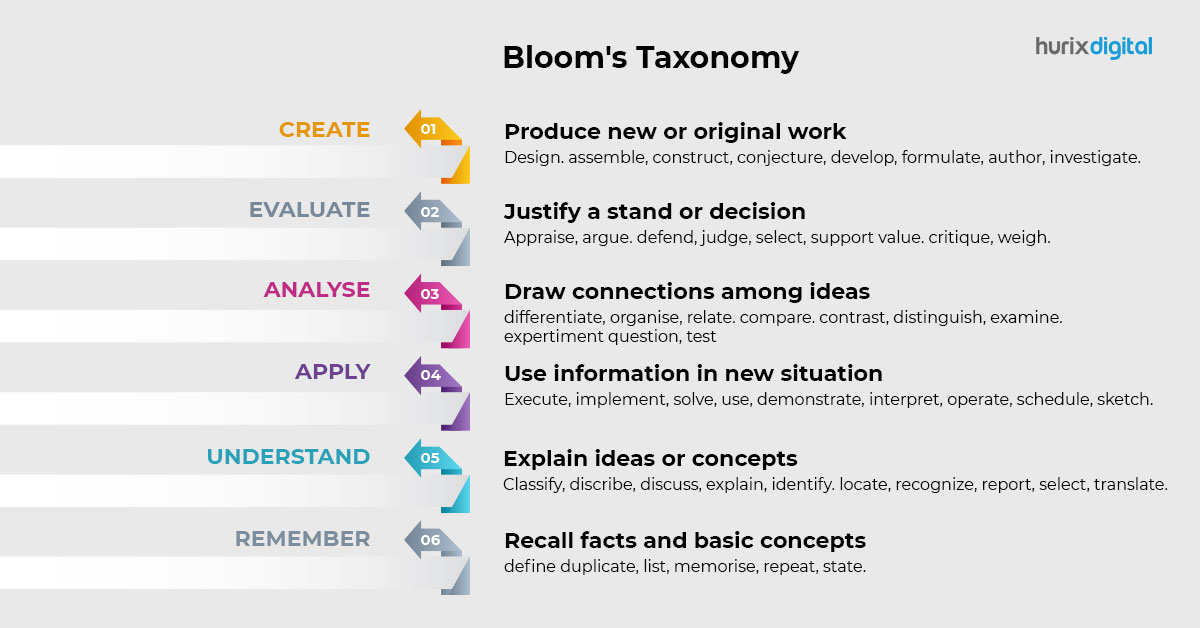 The key components of this framework are-
The key components of this framework are-
- Remembering: The phase involves retrieving prior knowledge from long-term memory and subsequently using the connections to aid in current understanding.
- Understanding: Involves using various strategies to conclude from current information, such as comparing meaning from messages, summarizing, and interpreting ideas.
- Applying: The phase involves implementing the procedure for learning.
- Analyzing: The step entails dividing the entire information into various meaningful parts while ensuring that all of these parts remain relevant to each other and the overall instructional goal.
- Evaluating-Involves critiquing and assessing information based on the overall outline learning criteria.
- Creating-The phase involves organizing the ideas into a new structure to develop a coherent pattern of understanding.
3. Backward Design/ Understanding By Design (UbD) Framework
This is another popular instruction learning design framework for higher education that is primarily based on the key ideas and research of cognitive psychology. It is mainly an iterative process that promotes reflection and improvement of the curriculum constantly.
The main aim of this framework is to offer students with various productive and engaging learning experiences to facilitate their understanding while maintaining alignment at the same time with established learning standards.
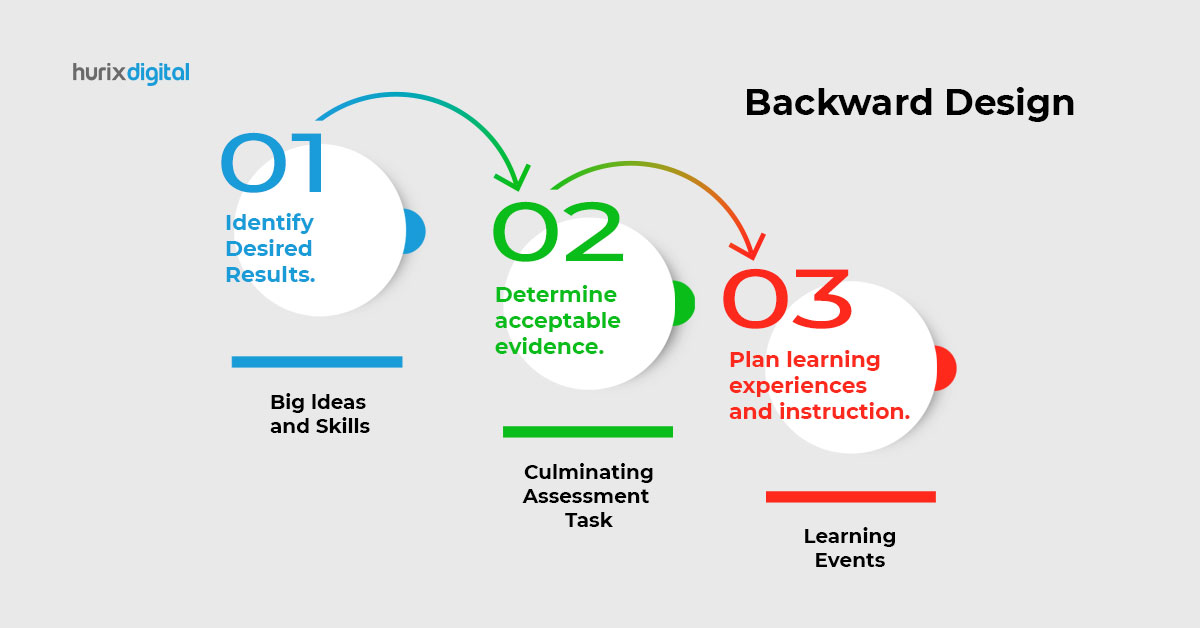
The key components of this framework are-
- Identification of desired results- The step involves considering long-term goals, examining established content standards, followed by reviewing curriculum expectations.
- Determination of assessment evidence: The step involves distinguishing between two types of assessment, including performance tasks (traditional quizzes/tests) and other evidence. Performance tasks here require students to apply their learning to a new situation to assess their understanding.
- Planning of learning experiences and instruction: At this step, designers are required to plan lessons and learning activities to be able to effectively address the goals identified in the first stage.
4. Design Thinking Framework
It is a solution-based approach that involves clearly understanding and empathizing with the learner. While doing this, the designer works on the specific needs of the learner and the creative solutions that instructional design in higher education can offer as solutions.
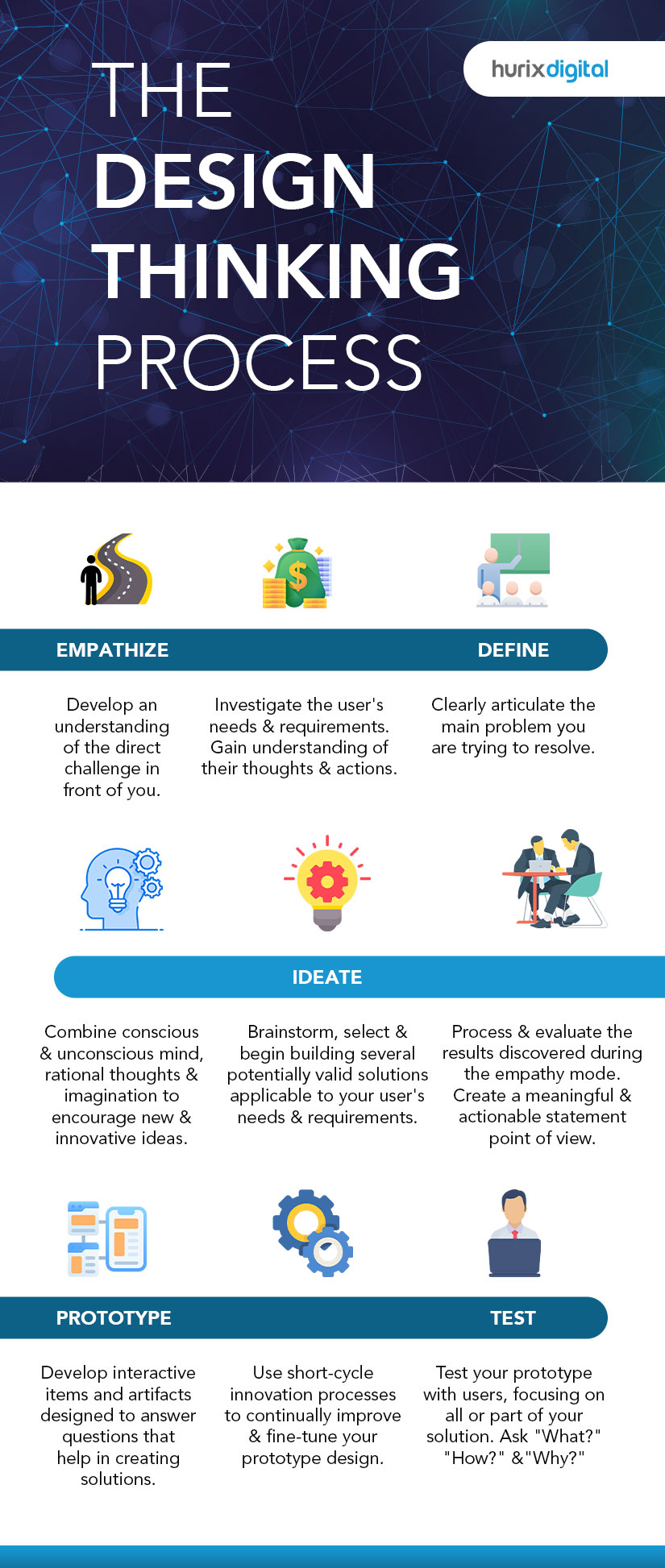
The key components of this framework include-
- Empathizing: The idea is to gain an empathetic understanding of the main problem by observing, engaging as well as empathizing with people to understand their experiences and motivations. It encourages instructional designers to part away with their assumptions to gain insight into users and their specific needs.
- Defining- Involves compiling information from the above stage to analyze and synthesize different observations to be able to define the problem.
- Ideating: Involves identifying new solutions to the problem using various techniques.
- Prototyping- Includes producing inexpensive versions of the product/features within the product to investigate the solutions, to identify the best solution for each of the problems identified in the above stages.
- Testing: Here, testing of the complete product is done using the best solutions from the prototyping phase, and iterations/ refinement are continued to be made.
5. Merrill’s Principle Of Instruction
Founded by M. David Merrill, the framework has five core principles centered on task-based learning. The key premise of this framework is that effective learning experiences are rooted in problem-solving.
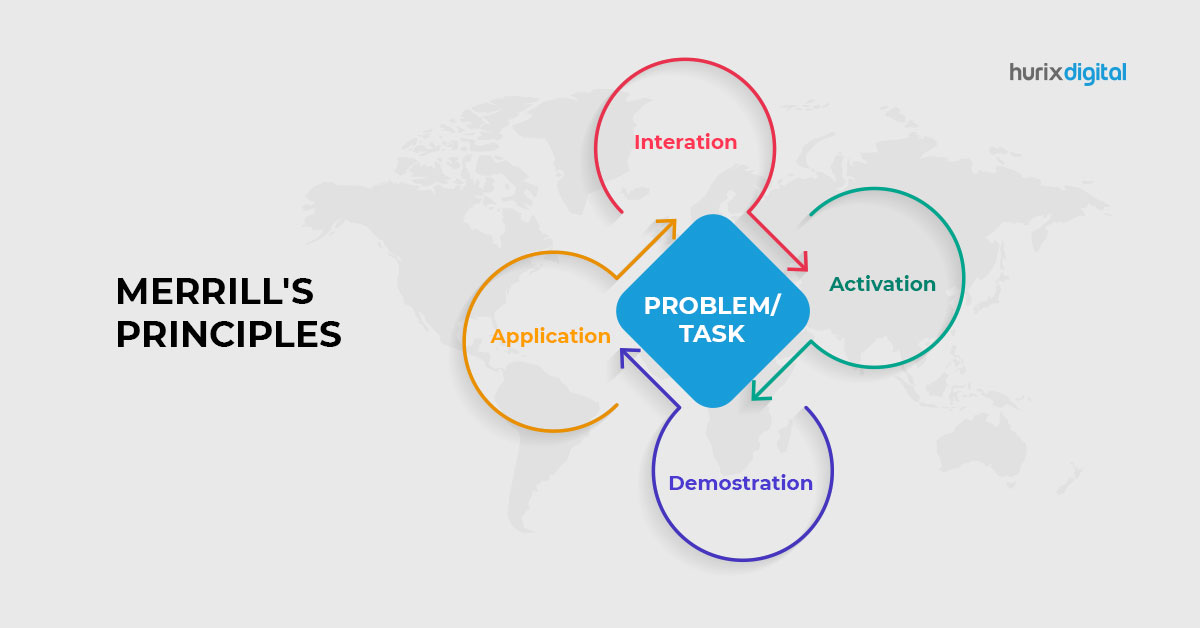
The key components of the framework include-
- Demonstrating: To apply the demonstration principle in eLearning course design, designers need to consider adding videos, online training tutorials, and other image-rich infographics that showcase the main ideas.
- Applying: Based on this model, this step comes in the form of interactive problem-solving and task performance to allow learners to see the challenges and obstacles firsthand.
- Activating: Learners must also be able to link the information to pre-existing knowledge, including past experiences that relate to the subject matter they are now exploring.
- Integrating-The phase involves exploring meaning and context where learners must get the chance to integrate their newly acquired skills or knowledge.
- Engaging: It involves task-centric learning that encourages learners to engage with the content by using everything they’ve learned to solve the problem and connecting it to real-world applications.
In Conclusion
Instructional learning design framework in higher education are often used when planning for online learning. However, the structure they offer can also be used by educators who are planning courses that will be delivered in face-to-face or hybrid formats as well.
Here, we have discussed some of the top higher education instructional design frameworks and the types of educational frameworks which can help guide you effectively in planning your course as well as organize what you plan to teach, and how you plan to teach, along with encouraging you to evaluate your success in these areas.

Senior Vice President – Business Development
Over 25 years of experience in the edtech and workforce learning industry with strong skills in Business Development, Customer Relationship Management (CRM) and Strategy.









